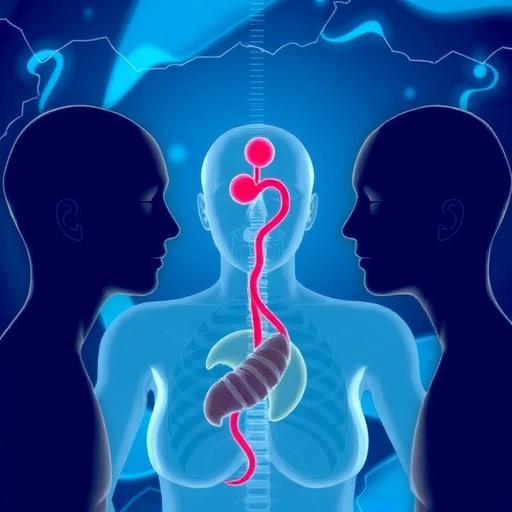Success rates after freezing all embryos for later transfer no better than with fresh transfers
Vienna, 24 June 2019: The increasingly popular trend for fertility clinics to freeze all IVF embryos for later transfer has been shown in a large multicentre randomised trial to offer no improvement in delivery rates over traditional ‘fresh’ embryo transfers. ‘Our findings give no support to a general freeze-all strategy in normally menstruating women,’ said investigator Dr Sacha Stormlund from Copenhagen University Hospital in Denmark, who presents the results today at the 35th Annual Meeting of ESHRE.
‘The results of this trial were as we expected,’ said Dr Stormlund, ‘namely, to see similar pregnancy rates between the fresh and freeze-all treatment groups. So I think it can now plausibly be said that there is no indication for a general freeze-all strategy in women with regular menstrual cycles who are not at immediate risk of overstimulation in IVF.’
Behind the study lies an increasingly adopted strategy in assisted reproduction to freeze all embryos generated in a first cycle and transfer them after thawing in a later cycle (rather than as fresh embryos in the initial cycle). Some recent reports from registries in Japan and USA have suggested that there are now more frozen embryo transfers in IVF than fresh, with numbers still growing and many clinics claiming that outcomes can be improved with a freeze-all approach. However, despite the enthusiasm of clinics, most study results investigating the freeze-all vs fresh controversy have been inconsistent in their results.
This study, which aimed to test the claim of improved outcome in a general IVF patient population, was a large randomised trial involving 460 IVF patients at eight clinics in Denmark, Sweden and Spain and powered to provide a robust result. The patients were randomly assigned to test the two different treatment approaches, both of them with single blastocyst transfer: freeze-all with frozen embryo transfer in a subsequent cycle versus the control group with fresh transfer.
Results showed that the ongoing pregnancy per randomised patient after the first single blastocyst transfer was similar in the two groups: 26.1% in the freeze-all group and 28.8% in the fresh transfer group, a statistically non-significant difference suggesting that a general freeze-all policy will bring no patient benefit in terms of pregnancy outcome. Live birth rates were also comparable.
‘I think we can now reasonably say, based on our results and those from other recent trials, that in normally ovulating patients there is no apparent benefit from a freeze-all strategy in IVF,’ said Dr Stormlund. ‘However, the evidence derived from another large trial in women with polycystic ovary syndrome and at risk of responding excessively to stimulation suggests a considerable freeze-all benefit both in terms of live birth and ovarian hyperstimulation syndrome.’
This latter component of safety was an additional secondary endpoint to the study. In the freeze-all cycles ovulation of the mature eggs was triggered with a reproductive hormone-suppressing drug known as a GnRH agonist; in the conventional fresh transfer group ovulation was triggered traditionally with hCG. And in this part of the study there was an apparent patient benefit from the freeze-all approach in terms of patient safety. Twenty-five of the 220 patients in the fresh transfer group were judged at risk of ovarian hyperstimulation syndrome (OHSS) towards the end of their treatment cycle and, to remove the risk, they were switched to the freeze-all group.
‘The occurrence of OHSS was not systematically assessed in women allocated to the freeze-all group,’ explained Dr Stormlund, ‘as any risk in this group was practically eliminated. Indeed, there were no signs of OHSS in the freeze-all group. The 25 patients judged at high risk of OHSS in the fresh transfer group were swopped from the fresh to the freeze-all group as a safety measure and according to trial protocol.’
The latest European figures from ESHRE put the reported incidence of OHSS at 0.3%, making it the most common complication of IVF. ‘However,’ said Dr Stormlund, ‘in a recent study from our group in Denmark, we found a considerably higher rate of severe OHSS of 5.1%. That’s why in this study we aimed to reduce the risk of OHSS with a freeze-all plan with GnRH trigger and a cancellation policy in the fresh embryo transfer group for women at high risk of OHSS.’
However, Dr Stormlund insisted that there is still no reason to recommend the freeze-all strategy for patients not at immediate risk of OHSS. Only in patients with anovulatory infertility should an immediate freeze-all strategy be considered. ‘At present,’ she said, ‘there is only sufficient evidence to recommend freeze-all for patients diagnosed with polycystic ovary syndrome. Otherwise, in women with regular cycles, we see no benefit.’
###
Abstract O-069, Monday7 24 June 2019
Freeze-all versus fresh embryo transfer in ART: A multicentre randomised controlled trial in normo-ovulatory women
Freeze-all: the story so far
1. The concept of freezing all embryos for deferred transfer was first raised as a safety measure for IVF patients responding excessively to ovarian stimulation. Because of the link between OHSS and hCG, it was thought that triggering ovulation with an alternative to hCG and avoiding pregnancy in the treatment cycle would minimise exposure to hCG and thereby lower the OHSS risk. (see Devroey P, Polyzos NP, Blockeel C. An OHSS-free clinic by segmentation of IVF treatment. Hum Reprod 2011; 26: 2593-2597)
2. Since then, against a background claim that ovarian stimulation may also be detrimental to implantation, many clinics have adopted a freeze-all strategy with the aim not just of lowering the risk of OHSS but also of improving delivery rates in a later non-stimulated drug-free cycle.
3. So far, study results (trials and meta-analyses) have been inconsistent, with most showing no outcome benefit in patients with normal ovulatory cycles. The first (and only) big trial showing an improvement in outcome in a general IVF patient population came earlier this year from China (Wei D, Liu J-Y, Sun Y, et al. Frozen versus fresh single blastocyst transfer in ovulatory women: a multicentre, randomised controlled trial. Lancet 2019; doi: org/10.1016/S0140-6736(18)32843-5.)
* When obtaining outside comment, journalists are requested to ensure that their contacts are aware of the embargo on this release.
For further information on the details of this press release, contact:
Christine Bauquis at ESHRE
Mobile: +32 (0)499 25 80 46
Email: [email protected]
Media Contact
Christine Bauquis
[email protected]




